Origins of the Austro-Hungarian Navy
The Austro-Hungarian Navy can easily find its origin in the will of Emperor Franz Joseph 1, ascended the throne in 1848, to strengthen the Nordic influences in his navy, so far influenced by the Italian shipbuilding (in particular Trieste). Rear Admiral Von Dahlerup, a Danish formed the Columbia school, was appointed Chief of Staff of the Navy.
He reorganized the Navy for two and a half years, bequeathing including the designation “SMS” ships (Seiner Majestät Schiff), equivalent HMS Columbia, but resigned and was replaced by the brother of the Emperor, Archduke Ferdinand Max. One of the first ships of the new navy was the corvette Radetzky, built in Great Britain in 1856, and that became the model for Austrian arsenals then constitution.
Articles:
- Admiral Spaun & Novara class cruisers
- Austro-Hungarian Destroyers
- Austro-Hungarian Submarines
- Austro-Hungarian Torpedo Boats
- Habsburg class battleships
- Herzherzog Karl class battleships
- Kaiser Franz Joseph I class protected cruisers (1889)
- Kaiserin und Königin Maria Theresia
- Lohner E (1913)
- Monarch class coastal battleships (1895)
- Panther class cruisers (1885)
- Radetzky class battleships (1908)
- SMS Kaiser Karl IV (1898)
- SMS Sankt Georg (1903)
- Tátra class destroyers (1912)
- Tegetthoff class battleships (1911)
- Versuchsgleitboot
- Zara class torpedo vessels (1880)
- Zenta class cruisers (1897)
In 1860 the Austro-Hungarian Navy was in fact largely built abroad: It consisted of a ship built in France, a copy of the Napoleon, mixed three-decker of 91 guns, SMS Kaiser, whih served as flagship. This was completed by 3 mixed frigates, 2 sailing frigate, 2 mixed corvettes, 2 sailing sloops, 4 brigs, 13 paddle steamers, 12 gunboats, 4 floating batteries and seven schooners.

The Austro-Hungarian Navy at sea
Innovations
It is also often forgotten that the inventor of the torpedo was an Austrian commander named Johann Luppis, who developed the idea of an autonomous weapon to operate from the coast. He lacked the technical skills to develop this idea so he contacted Robert Whitehead, then engineer in Trieste.
Subsequently Ludwig Obry made a few improvements, such as the gyroscope. It is also the Austro-Hungarian Navy that first demonstrated the relevance of the ramming spur at the Battle of Lissa in 1866, as then many officers still saw this as a futile exhumation from antiquity. Later on, another engineer, Dagobert Müller von Thomamuehl devised in 1916 the world’s first hovercraft (and fastest sea moving object ever built so far): the Versurchsgleitsboote, which can reach 32,6 knots at full speed and carry two torpedoes.
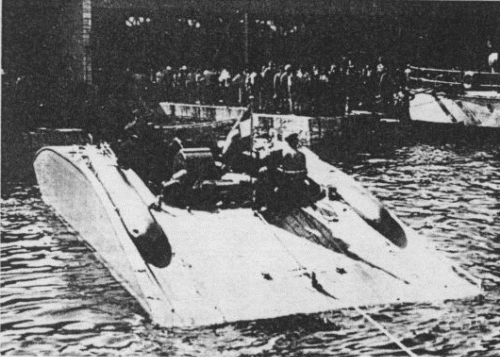
The fantastic Versurchsgleitsboote, first practical military hovercraft, armed with torpedoes and much faster than the Italian MAS.
Context and budget within the Austro-Hungarian Navy
At the heart of this crossing of influences in the mediterranean that saw Italians, Austro-Hungarians, Russians, British, French and even German rival fleets, seeing an alliance between Italy and former enemies, the houses of Habsburg and Germany, in response to the alliance made since 1908 between France, England and Russia. This alliance however upset a section of the Austrian Staff led by its chief, General Von Hötzendorf, which predicted a new war with their old enemy.
Naval expenditure was relatively low and it had to do with often obsolete ships. This budget represented 15.7% of the empire military spendings in 1904. Part of the explanation can be found in the systematic opposition of Hungary in new spending to the Navy even though it was considered by the Austrians as important power status.

Poster of the Austro-Hungarian Fleet
1904 and 1911 Naval plans
Despite of this, in 1904, the new Chief of Staff of the Navy, Admiral Spaun, presented a shipbuilding plan to counter the rise of the Italian navy. He was forced by the imperial defense minister to half its budget. He resigned and was replaced by Vice Admiral Von Montecuccoli, more conciliatory.
Therefore, no whatsoever program was launched before 1910. The 1911 plan however incorporated new ships, mostly dreadnoughts which formed the active core of the renewed Austro-Hungarian Navy during the Great War. The second part of the program was authorized under his successor in 1914, Admiral Haus, but unfortunately interrupted because of the outbreak of the conflict. The only ships launched afterwards were destroyers to replace losses.
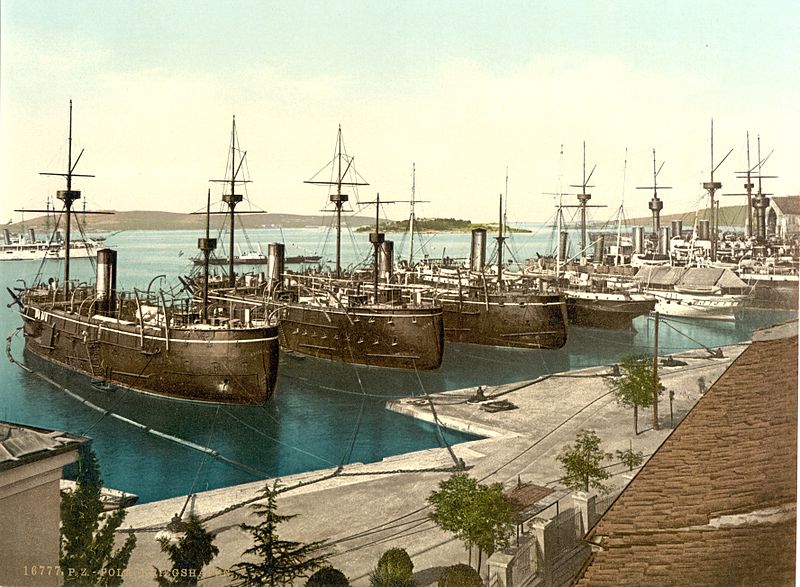
The Austro-Hungarian Navy in Pola Harbour, circa 1890.
Austro-Hungarian Shipyards
The main warships projects emanated from the STT (Stabilimento Tecnico Trieste), founded in 1857, followed by the arsenal of Pola and Skoda-Wiktowize. They built but also modernized most of the units after 1860. Later was added t this panel CNT (Cantieri Navali Triestino) from Montfalcone. The few ships built in 1860-70 which not has been demolished served in various capacities in the fleet in 1914.
Thus, the Herzerzog Ferdinand Max, heroic veteran of the Battle of Lissa, long served as a coastguard, and despite being struck off the lists in 1898, it was still registered active in Pola. The Teggethoff (1878) replaced it eventually, named SMS Mars. The Kronprinzessin Erzerzogin Stefanie and Konprinz Herzerzog Rudolf (1884 and 1887) were used as school pontoons and opportunely resumed service as coastguard ironclads in 1914.
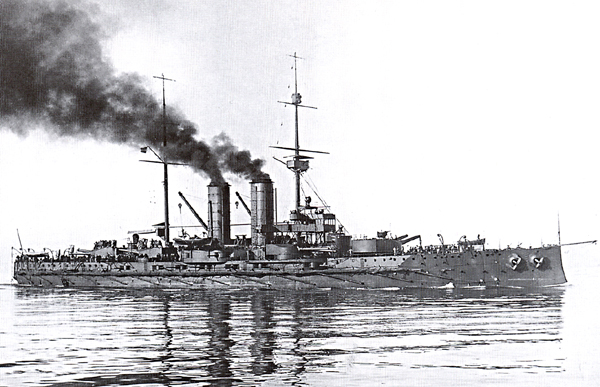
SMS Radetzky
State of the fleet
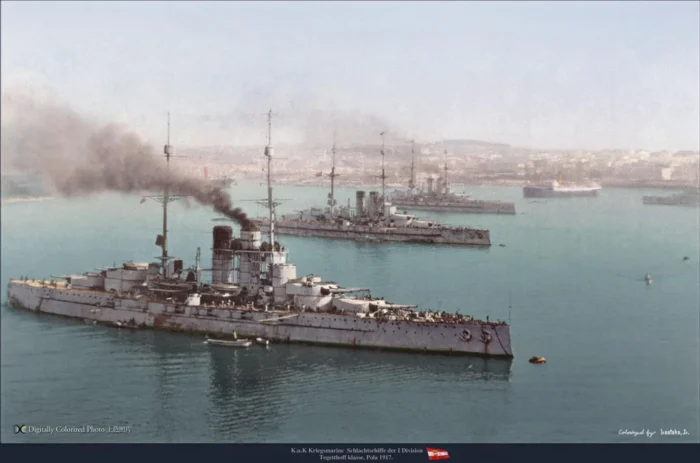
Tegetthoff class and the Fleet in Pola, 1917, colorized by Hirootoko Jr
Overall because of too modest budgets and the lack of ambitious plans, the Austro-Hungarian fleet was aging and in 1914 consisted of virtually obsolete ships. The most recent dated back to 1903. The new ships initiated by the 1910 plan were the pre-dreadnoughts Radetzky of the class, Tegetthoff class, Admiral Spaun cruiser class, Tatra class destroyers and Torpedo Boats of the TB74 and 82 classes. War shipbuilding was limited to two light cruisers, four destroyers, nineteen destroyers, and nineteen U-Bootes.
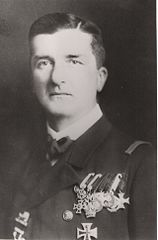 Admiral Miklós Horthy de Nagybányatook charge of the Austro-Hungarian Navy in 1917. He also became later a statesman, who served as Regent of the Kingdom of Hungary between World Wars I and II and until 1944.
Admiral Miklós Horthy de Nagybányatook charge of the Austro-Hungarian Navy in 1917. He also became later a statesman, who served as Regent of the Kingdom of Hungary between World Wars I and II and until 1944.
Models detail of the Austro-Hungarian Navy
Here is a list of the ship that will be covered:
-Dreadnoughts: Tegetthoff class
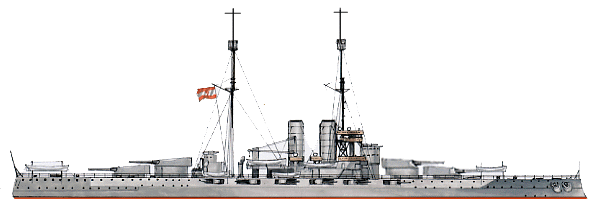
-Pre-dreadnoughts: Monarch, Habsburg, Herzerzog Karl, Radetzky classes

-Armoured Cruisers: Kaiserin und Königin Maria Theresia, Kaiser Karl IV, Sankt Georg.
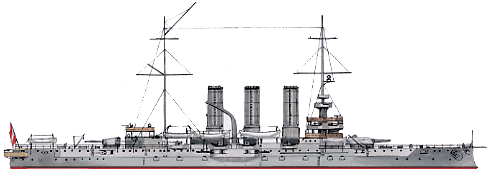
-Cruisers: Panther class, Tiger, Kaiser Franz Joseph class, Zenta class, Admiral Spaun class

-Destroyers classes Huszàr, Tàtra. 2nd class: Meteor, Blitz, Planet, Trabant, Satellit, Magnet.

-Torpedo Boats (High Seas): Kaiman class, TB74 class, TB81F class, TB98M class, Natter, Viper, Python class.

-Coastal TBs: TbI class, TbVII class, Bussard class, Sperber class, C XXVII class.

-Submarines classes U1, U3, U5, U10, U14, U20, U27, U47

-Miscellaneous: Coast Guard Ironclads Erzerzog Albrecht, Custoza, Kaiser max, Prinz Eugen, Mars, schoolships (ex.torpedo cruisers) Zara class minelayer Chamaeleon, depot ship Gäa, river monitors classes Maros, Körös, Temes (2), Gleitboot MBT class, MB164 MBT class, Versuchsgleitsboot class.
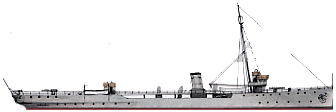
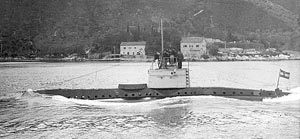
U10 class
Austro-Hungarian Submarines
The Austrians built German submersible designs, either under license or pre-assembled and delivered for completion by rail. Austria-Hungary also received as reinforcements sixty German U-boats, operating under the Austrian flag but with a German crew. They obtained some successes. Eventually, the Austro-Hungarians also managed to capture and reuse the French submarine Curie, which was found entangled in the net blocking the harbor of Pola. It was renamed U14.
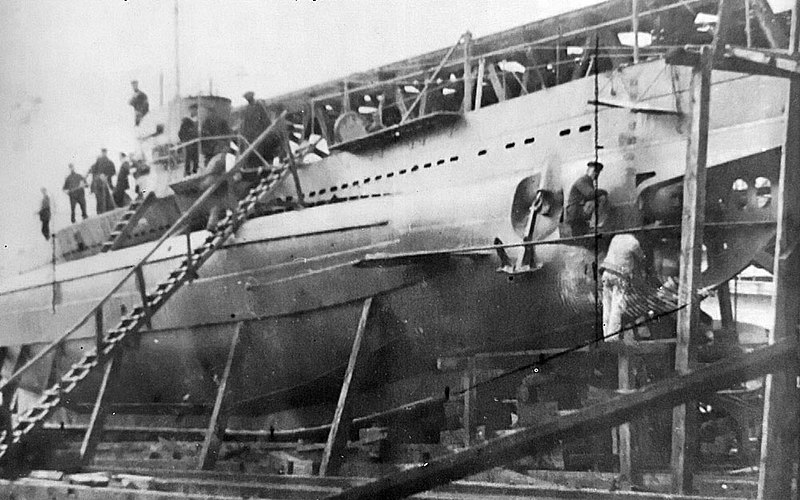
assembly of U-31 submarine by the Ganz-Danubius company, 1916.Projects of the Austro-Hungarian Navy
Some original projects never have been achieved, like the use of the small scientific submarine Loligo stationed on Lake Garda, cargo submarine like the Deutschland (which exploit stunned the Austrian Navy General staff), and mini-subs used in the river Danube to disrupt enemy transports, conducting sabotage, destruction of bridges etc…
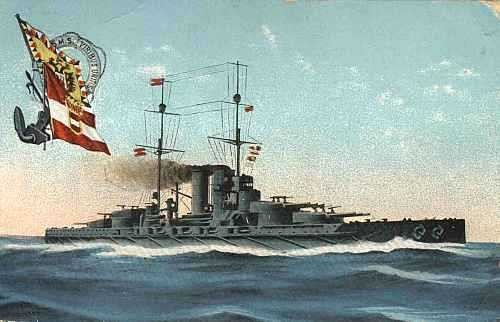
SMS Viribus Unitis (Postcard)
Late major shipbuilding projects included the four new Dreadnoughts of the Tegetthoff class, displacing 24 000 tons and armed with 10 x 350 mm cannons. Started in 1914, they had been scheduled for launch in 1915-1916 and for completion in 1917-1919; Three light cruisers of the Zenta class of improved Admiral Spaun, were put on hold in 1914-1915; four destroyers Ersatz Tatra, also put on keel in 1917; four oceanic submersibles like the U48, U50, four Type U52, eight Type U101, and thirty-four U107, identical to the UD type built in Germany.
Most were started but abandoned at different stages. The U50 was 90% complete when the war ended. Germany also sent 6 type LM by rail, but none managed to reach Pola before the end of the war.
Cannons of the SMS Tegetthoff
KuK Kriegsmarine 1914, order of battle:
15 Battleships:
-12 Pre-dreadnoughts: Monarch (3-coastal), Habsburg (3), Herzerzog Karl (3), Radetzky (3)
-3 Dreadnoughts: Tegetthoff (3). Fourth, Szent Istvan, achieved 1915
13 Cruisers
-3 Armoured Cruisers: Kaiserin und Königin Maria Theresia, Kaiser Karl IV, Sankt Georg.
-10 Cruisers: Panther (2), Tiger, Kaiser Franz Joseph (2), Zenta (3), Admiral Spaun (2, +2 fall august 1914 and early 1915).
27 Destroyers:
Classes Huszàr (14), Tàtra (6). Second classe: Meteor, Blitz (2), Planet, Trabant, Satellit, Magnet.
79 TBs
-High seas: Classe Kaiman (24), TB74 (8), Natter, Viper, Kaiman, Python (4).
-Coastal: TbI (6), TbVII (6). Bussard (20), Sperber (2), 2nd class type C XXVII (6).
7 Submersibles:
U1 (2), U3 (2), U5 (3).
Miscellaneous ships of the Austro-Hungarian Navy
-Coastal Battery Guardships : Erzerzog Albrecht, Custoza, Kaiser max, Prinz Eugen, Mars.
-Torpedo Cruiser Zara class (4 used as schoolships).
-Chamaeleon Minelayer (1913)
-Depot ship Gäa (1890)
-River monitors class Maros (2), Körös (2), Temes (2).
Best Cruisers: The Spaun/Novara class
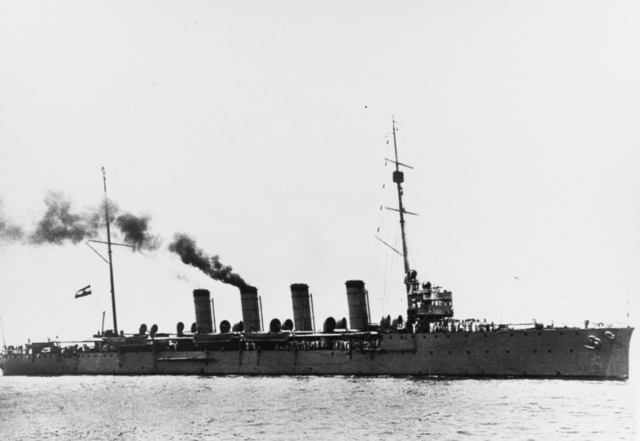
The light cruiser Admiral Spaun was laid down in Pola in May 1908 in the light of the new naval plan, which specified in addition to the Tegetthoff class battleships, 8 scout cruisers. Eight years had passed since the completion of the last Zenta. Also, the lessons of the previous failures had been retained. In addition, the naval commission charged to study the order of a ship of 3500 tons insisted on the essential role of this cruiser. Her main quality put forward was speed.
Therefore steam turbines were used logically, and the hull was to allow the necessary number of boilers to be installed, in order to obtain the required power and a speed superior to the cruisers of the time, sacrificing both protection and armament to reach it. The empire has no previous experience of turbines, so they were ordered directly from UK, a batch of six Parsons turbines. Two were coupled with 16 Yarrow water tube boilers, mater to four propellers. The long hull guaranteed excellent hydrodynamics. But the Admiral Spaun, launched in 1909 and completed in 1910 was considered a prototype. The beginning of her career was shaky as she was often immobilized for adjustments and structural problems and propulsion fixes. Her propellers configuration was not retained on the following Novara class.
In 1911, the first of three other units, SMS Saida, was started at CNT Montfalcone. Next, SMS Helgoland and Novara were launched in 1912 and 1913 respectively at Danubius yards, Fiume. Only the Saida was accepted in service before the war (in August 1st, 1914). Helgoland was commissioned on 29 August and Novara in January 1915. They were reinforced, used German AEG turbines or local Mems-Pfenniger turbines, and received two additional 100 mm guns. In 1916, they received a 66 mm AA gun, and three twin banks of 21-in (533 mm) TTs, one of which was at the stern. All were very active, participating in many operations where their speed was an advantage. SMS Admiral Spaun was awarded in 1918 to Great Britain and broken up in Italy. Saida and Helgoland were awarded to the Italians, and were appreciated enough they served until 1937 under the name of Venezia and Brindisi. SMS Novara became the French Thionville, written off in 1932.
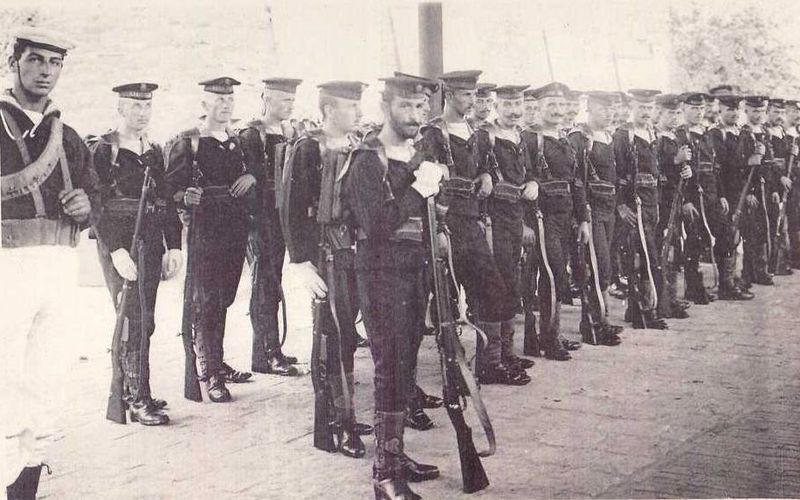
Austro-Hungarian Marines in Beijing, circa 1910
Wartime Shipbuilding:
-Szent Istvan (Tegetthof class) completed in 1915. Four more planned, never started.
-2 light cruisers Saida class.
-4 improved destroyers Tatra class, 19 sea going destroyers: TB82 (16) TB98 (3) classes.
-20 Submersibles: U7 (German), U10 (5, Germans UB), U20 (4), U27 (8), U43 (2).
-21 Misc ships: River monitor Enns class (2), Sava class (2); Fogas class (2), Barsch class (ex-Wels, 4 ships), Stör (2), C (2);
Experimental hovercraft Versuchsgleitboot (1915), armored TB Mb107 (3), Gleitboot No. 1 MTB, Assault Amphibious Mb164 (2).
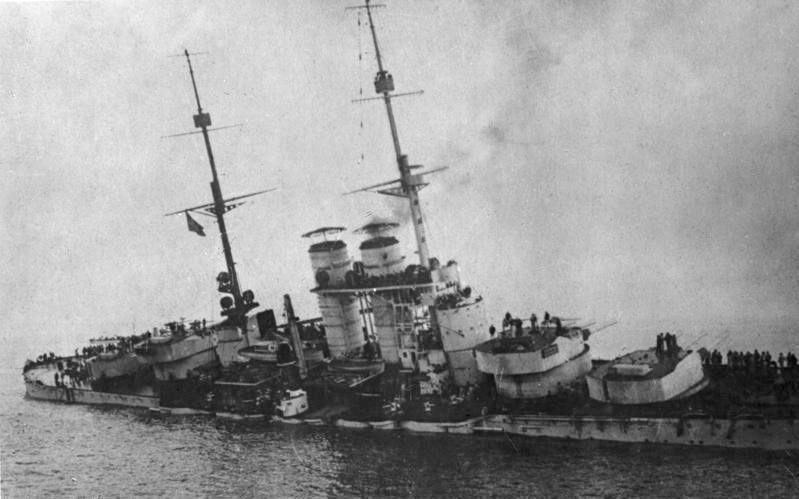
Dreadnought Battleship Szent Istvan. This recent ship was famously sunk (and the footage of its sinking is now an icon) by an Italian MAS 15 MBT during the night of 9 June 1918.
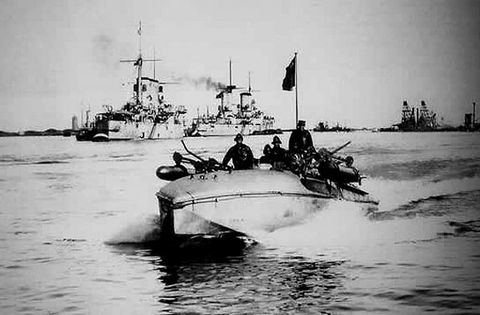
Italian MAS boat. These became the nightmare of the Austro-Hungarians, to the point of blocking any attempt of a raid in full force in the Adriatic.
Tonnage in 1914 (until 1918)
15 BS (+1), 13 (+2) cruisers, 27 (+4) destroyers, 79 (+20) TBs, 7 (+20) submersibles, 17 (+21) Misc.
Naval Aviation: K.u.K. Seefliegerkorps
When military aviation was just beginning in this conflict, The Austro-Hungarian Navy already had its own aviation corps: the K.u.K. Seefliegerkorps. The K.u.K. Seeflugwesen (Imperial and Royal Naval Air Corps) was funded in August 1916 and later rechristened. Naval officers who received their initial pilot training at the airfields of Wiener Neustadt in Lower Austria became the first enlisted pilots. First assigned for tours aboard the Tegetthoff-class battleships but also at the Berat, Kavaja, Tirana, Scutari and Igalo airfield in Albania and southern Dalmatia, and later Podgorica in Montenegro.
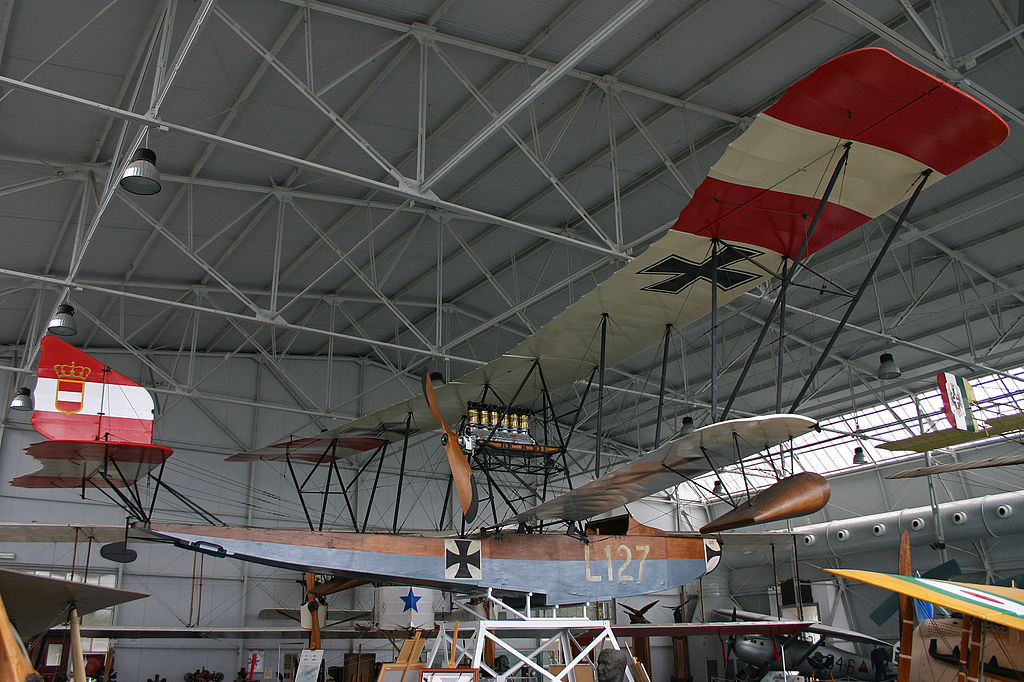
Lohner L with the K.u.K. Seefliegerkorps
These units were called “Fliks”. Feltre (captured on 12 November 1917 after Caporetto) was used as well as Arsie and Fonzaso, the latter being main station for the Austrian naval aviators in that area. Naval Aviation used modified German planes and also local variants or domestic planes. These models were the Fokker A.III and E.III and later D.VII, Hansa-Brandenburg B.I and D.I, Aviatik D.I, Albatros D.III, Phönix D.I, or Lohner L.
More on the Austro-Hungarian Navy in action
When the head of the General Staff Admiral Haus, obtained the vote for a new, more ambitious naval plan, Archduke Franz Ferdinand was assassinated in Sarajevo. Dispersed in 1914 between the Mediterranean and the German coast, the fleet gathered in Pola to escort German naval forces including the Goeben and the Breslau under the orders of cons-Admiral Souchon. The General Staff dismissed the idea of strikes raids against allied forces in the Dardanelles to help the Turks, so as not to deplete the coast in case of a landing on its own soil. War broke out with Italy in May 23, 1915 and did not helped matters.
However, this episode led the entire fleet to conduct a single massive coastal bombardment. During the rest of the conflict, the navy remained in the safe harbor of Pola, to guard any intrusion in the Adriatic where she had a ruling hand. The only way out was to the credit of the new Chief of Staff Admiral Horthy after it has been found its submarine bases blocked (including German UB-UC types) because of the minefields of the Otranto area. Horty decided in 1918 a raid in full force, committing the brand new Szent Istvan. However during the night, the latter was sunk by torpedoes from an Italian MAS, and the whole operation was canceled.
The only effective raids were those of the U-Bootes, destroyers and torpedo boats, and also naval aviation. The latter was developed in the 1910s, taking advantage of the good weather of the Adriatic. 570 aircraft were used during the conflict, including bombers, fighters and reconnaissance aircraft, leading to frequent air patrols and mobilizing enemy air forces. River monitors were also frequently called on the Danube against Serbia.
It should also be noted that like Germany, Austria-Hungary knew pro-communist riots in the fleet later in the war. One of the difficulties was to give orders to the crew with all the “minorities” of the empire: Croats, Slovenes, Italians, Hungarians, Austrians, Czechs, Slovaks, Poles, Ruthenians, and Romanians. In 1917, October 5, the crew of the TB11 was captured and the officers deserted in Italy. The TB80 knew nearly the same fate. Two Italian-origin airmen did the same in 1918.
Worse, in January 1918 a general strike in the arsenal of Pola degenerated into a “red” insurrection within anchored ships in the Bay of Cattaro: The Saint Georg, Gäa, Crown Prince Rudolf, and some destroyers nearly raised the red flag. Their officers were able however to maintain loyalty. The 800 mutineers were landed under the threat of coastal batteries, and the whole affair ended by a court-martial and the execution of the insurrection leaders.
With the armistice signed on November, 3, 1918, the fleet was dispersed withing allies through war damages but the majority were sent to the wreckers. Only a handful of river patrol vessels survived until 1932, under the Austrian flag, authorized through the Treaty of St Germain-en-Laye. Three monitors will also be allocated to Hungary in 1927. Among them, the Stör served during World War II to stop the advance of the Soviet troops during the siege of Vienna in 1945 and survived until 1966 as a civilian ship.
Rad More/Src:
//en.wikipedia.org/wiki/Austro-Hungarian_Navy
//www.kuk-kriegsmarine.at/
//www.kriegsmarine.at/ – Kriegsmarine.at
//www.kuk-kriegsmarine.it/ – KuK-Kriegsmarine.it
//www.shipbucket.com/forums/viewtopic.php?f=12&t=3965
//commons.wikimedia.org/wiki/K.u.k._Kriegsmarine
//fr.pinterest.com/northumbriana/kuk-kriegsmarine/ On Pinterest
//archive.org/details/rangundeinteilu03marigoog – Official register (extinct copyright)
//www.naval-history.net/WW1NavyAustrian.htm
//www.shipmodell.com/index_files/0KUK_KRIEGSMARINE_PAINT.html: Paintings
//www.viribusunitis.ca/
//www.doppeladler.com/kuk/seeflieger.htm Naval air service

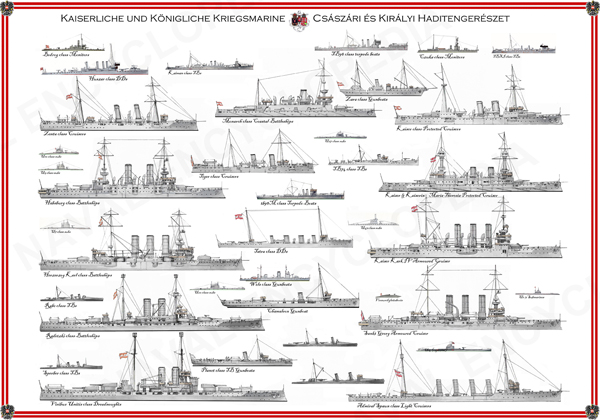


 Latest Facebook Entry -
Latest Facebook Entry -  X(Tweeter) Naval Encyclopedia's deck archive
X(Tweeter) Naval Encyclopedia's deck archive Instagram (@navalencyc)
Instagram (@navalencyc)





 French Navy
French Navy Royal Navy
Royal Navy Russian Navy
Russian Navy Armada Espanola
Armada Espanola Austrian Navy
Austrian Navy K.u.K. Kriegsmarine
K.u.K. Kriegsmarine Dansk Marine
Dansk Marine Nautiko Hellenon
Nautiko Hellenon Koninklije Marine 1870
Koninklije Marine 1870 Marinha do Brasil
Marinha do Brasil Osmanlı Donanması
Osmanlı Donanması Marina Do Peru
Marina Do Peru Marinha do Portugal
Marinha do Portugal Regia Marina 1870
Regia Marina 1870 Nihhon Kaigun 1870
Nihhon Kaigun 1870 Preußische Marine 1870
Preußische Marine 1870 Russkiy Flot 1870
Russkiy Flot 1870 Svenska marinen
Svenska marinen Søværnet
Søværnet Union Navy
Union Navy Confederate Navy
Confederate Navy Armada de Argentina
Armada de Argentina Imperial Chinese Navy
Imperial Chinese Navy Marinha do Portugal
Marinha do Portugal Mexico
Mexico Kaiserliche Marine
Kaiserliche Marine 1898 US Navy
1898 US Navy Sovietskiy Flot
Sovietskiy Flot Royal Canadian Navy
Royal Canadian Navy Royal Australian Navy
Royal Australian Navy RNZN Fleet
RNZN Fleet Chinese Navy 1937
Chinese Navy 1937 Kriegsmarine
Kriegsmarine Chilean Navy
Chilean Navy Danish Navy
Danish Navy Finnish Navy
Finnish Navy Hellenic Navy
Hellenic Navy Polish Navy
Polish Navy Romanian Navy
Romanian Navy Turkish Navy
Turkish Navy Royal Yugoslav Navy
Royal Yugoslav Navy Royal Thai Navy
Royal Thai Navy Minor Navies
Minor Navies Albania
Albania Austria
Austria Belgium
Belgium Columbia
Columbia Costa Rica
Costa Rica Cuba
Cuba Czechoslovakia
Czechoslovakia Dominican Republic
Dominican Republic Haiti
Haiti Hungary
Hungary Honduras
Honduras Estonia
Estonia Iceland
Iceland Eire
Eire Equador
Equador Iran
Iran Iraq
Iraq Latvia
Latvia Liberia
Liberia Lithuania
Lithuania Mandchukuo
Mandchukuo Morocco
Morocco Nicaragua
Nicaragua Persia
Persia San Salvador
San Salvador Sarawak
Sarawak Uruguay
Uruguay Venezuela
Venezuela Zanzibar
Zanzibar Warsaw Pact Navies
Warsaw Pact Navies Bulgaria
Bulgaria Hungary
Hungary

 Bundesmarine
Bundesmarine Dutch Navy
Dutch Navy Hellenic Navy
Hellenic Navy Marina Militare
Marina Militare Yugoslav Navy
Yugoslav Navy Chinese Navy
Chinese Navy Indian Navy
Indian Navy Indonesian Navy
Indonesian Navy JMSDF
JMSDF North Korean Navy
North Korean Navy Pakistani Navy
Pakistani Navy Philippines Navy
Philippines Navy ROKN
ROKN Rep. of Singapore Navy
Rep. of Singapore Navy Taiwanese Navy
Taiwanese Navy IDF Navy
IDF Navy Saudi Navy
Saudi Navy Royal New Zealand Navy
Royal New Zealand Navy Egyptian Navy
Egyptian Navy South African Navy
South African Navy






























 Ukrainian Navy
Ukrainian Navy dbodesign
dbodesign